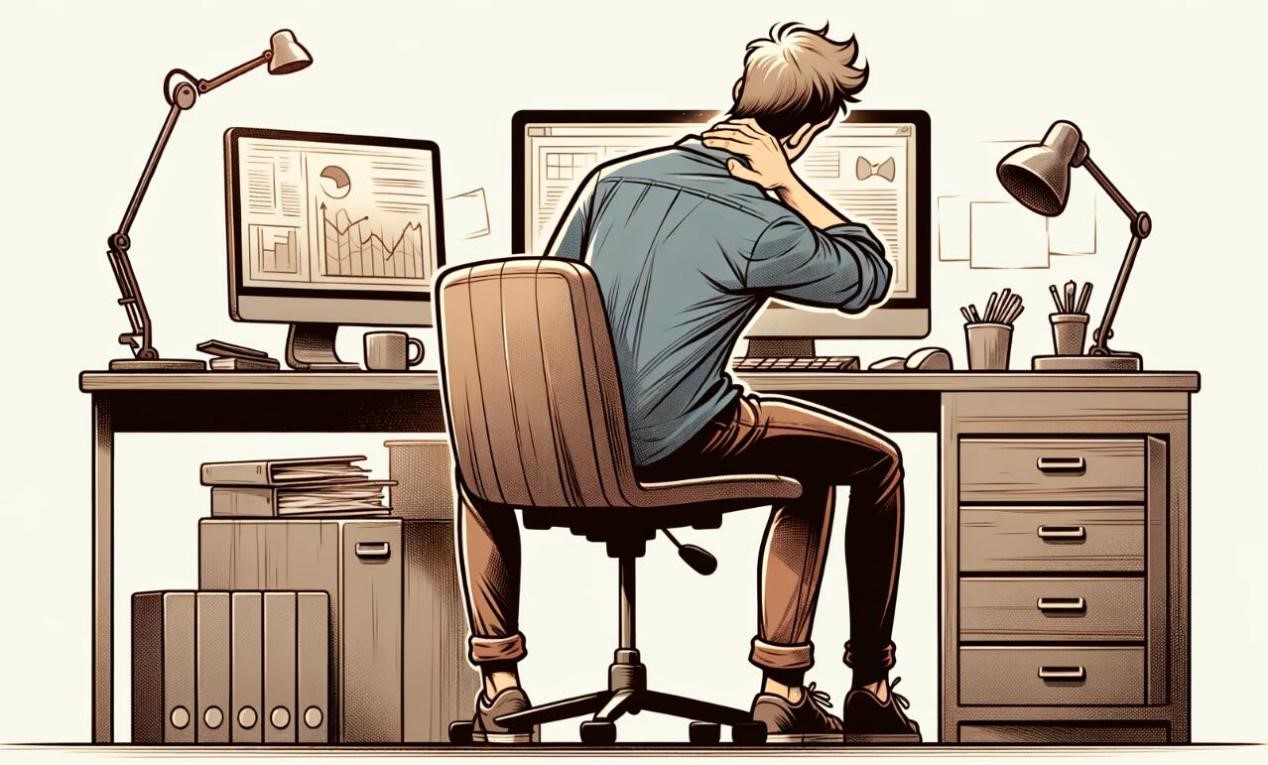If you spend long hours working at a desk, you know how easy it is to develop neck pain and stiffness from poor posture. The human head weighs roughly 10 pounds on average – not a trivial amount of weight to be holding up all day. Fortunately, with some adjustments to your workstation setup, stretches, and general awareness, you can find relief from common desk-induced neck aches.
Correct Your Posture
The first step is correcting your sitting posture. When your posture is off, the weight of your head strains muscles in the neck and upper back. This causes pain that can even extend into the shoulders.
Ideally, your computer screen should be at eye level so you aren’t constantly looking down. Place items you need to reference within your natural field of view instead of off to one side where twisting is required to view them. Keep your phone within easy reach so you don’t need to crane over to see notifications.
Your chair should provide solid lumbar support for your lower back. Arm rests can take pressure off the shoulders, but shouldn’t force you into an uncomfortable or restrictive position. Your feet should rest flat on the floor or a footrest. In general, set up your workstation so you can maintain a relaxed yet upright posture without excessive reaching or twisting.
Take Regular Breaks
Even with ideal posture, remaining in one position hour after hour can tax the body. Get into the habit of taking short 2-5 minute microbreaks every 30 minutes or so. Stand up, stretch, walk around, or simply change positions briefly before resuming work.
Schedule longer 10-15 minute breaks every couple of hours as well. Grab a snack, chat with coworkers, run an errand – anything to fully disengage from screen staring. Breaks are crucial for relieving accumulated muscle tension in the neck. Aim for at least one longer break every 2-3 hours spent working.
Do Seated and Standing Stretches
Complement good workstation ergonomics and breaks with some simple stretches right from your desk. For the upper back and neck, sit up straight then look down towards your chest, feeling a stretch in your neck. Hold for 10-15 seconds then lift back to center, now looking slightly upwards with your chin tilted in, holding another 10-15 seconds. Repeat this sequence several times.
From a seated position, you can also tilt your head gently to each side, first ear approaching the shoulder then alternate, holding stretches 10 seconds on each side. Gently roll the neck in circles, alternating direction. Be sure to feel stretches in the neck itself – don’t force the range of motion.
When taking standing breaks, stand in a doorway with your arms extended and hands on the door frame. Gently lean forward until you feel a slight stretch in the neck and upper back. Hold for 15-20 seconds. This opens up the chest and shoulders, taking pressure off compressed neck muscles.
Get a Massage
If chronic neck tightness and pain persists despite your best efforts, consider booking some massage therapy. A professional massage therapist can identify trigger points and use techniques like myofascial release to alleviate muscle tension in the neck, shoulders and back. Often just a single 60 minute massage session can provide several days of neck pain relief.
For continued benefit, supplement in-person massage with a self-massage tool like a body back buddy. Lean against a wall and place the tool over sore spots in your upper back. Apply pressure and move the tool around to massage tight areas for 1-2 minutes as needed throughout your workday. This can further extend relief between professional massage appointments.
When to Seek Help
Be sure to consult your doctor if significant neck pain persists for over 2 weeks despite self-care efforts. Severe pain that radiates down the arm or causes numbness, tingling, weakness in the arm may indicate a herniated disc or nerve compression requiring prompt medical treatment. Seek care immediately for any neck trauma related to accidents as well.
Don’t ignore chronic neck tension. Left unchecked, it can progress to more severe pain, muscle damage or injury over time. Commit to neck-friendly workstation habits, regular stretching, massage and medical care when appropriate. With some diligence about relieving muscle tightness, you can keep neck pain at bay despite long hours working at a desk.













